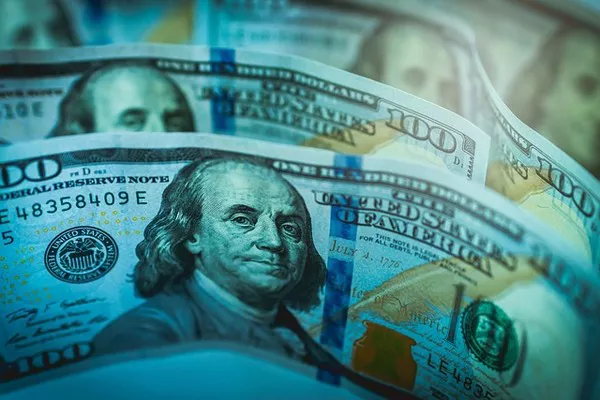In the realm of global finance, currency fluctuations play a pivotal role in shaping investment strategies. A weakening dollar can significantly impact investment decisions, prompting investors to seek alternatives that can mitigate risks and potentially yield favorable returns. Understanding how to navigate investments in a weak dollar environment requires a nuanced approach, balancing risk, diversification, and the pursuit of assets that can thrive under such conditions.
The Impact of a Weak Dollar
A weakening dollar can have far-reaching implications across various asset classes and investment instruments. When the dollar depreciates against other major currencies, it typically signals reduced purchasing power and can lead to higher import costs, inflationary pressures, and altered global trade dynamics. For investors, this scenario necessitates a strategic reassessment of their portfolios to safeguard against potential losses and capitalize on emerging opportunities.
Asset Considerations
In light of a weakening dollar, investors often turn to alternative assets that can serve as effective hedges or provide returns independent of traditional currency fluctuations. Several investment options can be considered:
1. Precious Metals
Historically, precious metals like gold and silver have served as reliable stores of value during periods of currency depreciation. As the dollar weakens, the demand for these metals tends to rise, driven by their intrinsic value and role as safe-haven assets. Investing in physical metals or exchange-traded funds (ETFs) linked to precious metals can provide diversification and stability in a weakening dollar environment.
2. Foreign Exchange (Forex) Markets
Engaging in foreign exchange trading can offer opportunities to profit from currency movements. In a weak dollar scenario, investors might consider taking positions in currencies that are strengthening relative to the dollar. However, Forex trading carries inherent risks and requires a sophisticated understanding of global macroeconomic factors.
3. Real Estate
Investing in real estate, particularly in markets with strong fundamentals and potential for appreciation, can be a viable strategy during a weak dollar cycle. Real estate assets often serve as tangible investments that can preserve value and generate income streams independent of currency fluctuations.
4. Commodities
Certain commodities, such as oil, agricultural products, and industrial metals, can exhibit price increases during periods of dollar weakness due to global demand dynamics. Investing in commodities through ETFs or futures contracts can provide exposure to sectors that benefit from a weaker dollar.
5. Stocks of Multinational Companies
Stocks of multinational corporations that derive a significant portion of their revenues from international markets can be attractive investments during a weak dollar phase. These companies can benefit from foreign currency appreciation against the dollar, boosting their earnings and stock valuations.
Strategies for Investing in a Weak Dollar Environment
Navigating investments in a weak dollar environment requires a comprehensive approach that integrates risk management and strategic allocation. Consider the following strategies:
1. Diversification
Diversifying across asset classes and geographic regions can help mitigate the risks associated with currency fluctuations. A well-diversified portfolio typically includes a mix of equities, bonds, commodities, and alternative investments to balance risk and return potential.
2. Focus on Inflation Protection
Inflation tends to accompany a weakening dollar. Investing in assets that have historically performed well during inflationary periods, such as real estate, inflation-protected securities, and commodities, can help preserve purchasing power.
3. Active Management
During periods of heightened volatility and currency instability, active management of investment portfolios becomes crucial. Regularly reassessing asset allocations, adjusting positions based on market conditions, and staying informed about geopolitical developments are essential for successful investing in a weak dollar environment.
4. Consider Geopolitical Factors
Geopolitical events and policy decisions can exert significant influence on currency valuations. Monitoring geopolitical developments, central bank policies, and trade agreements can provide valuable insights into potential investment opportunities and risks.
5. Seek Professional Guidance
For individual investors and institutions alike, seeking advice from experienced financial advisors or investment professionals can offer tailored strategies and insights specific to navigating a weak dollar environment. Professional guidance can help optimize investment decisions and ensure alignment with broader financial goals.
See Also What Happens To The Dollar When Inflation Rises
Conclusion
Investing in a weak dollar environment requires adaptability, foresight, and a proactive approach to portfolio management. By diversifying across asset classes, focusing on inflation protection, and considering alternative investments, investors can position themselves to navigate currency fluctuations and capitalize on emerging opportunities. Moreover, staying informed about global economic trends and seeking professional advice can enhance investment outcomes in the face of a weakening dollar. Ultimately, a well-executed investment strategy can not only mitigate risks but also yield attractive returns in challenging currency environments.


